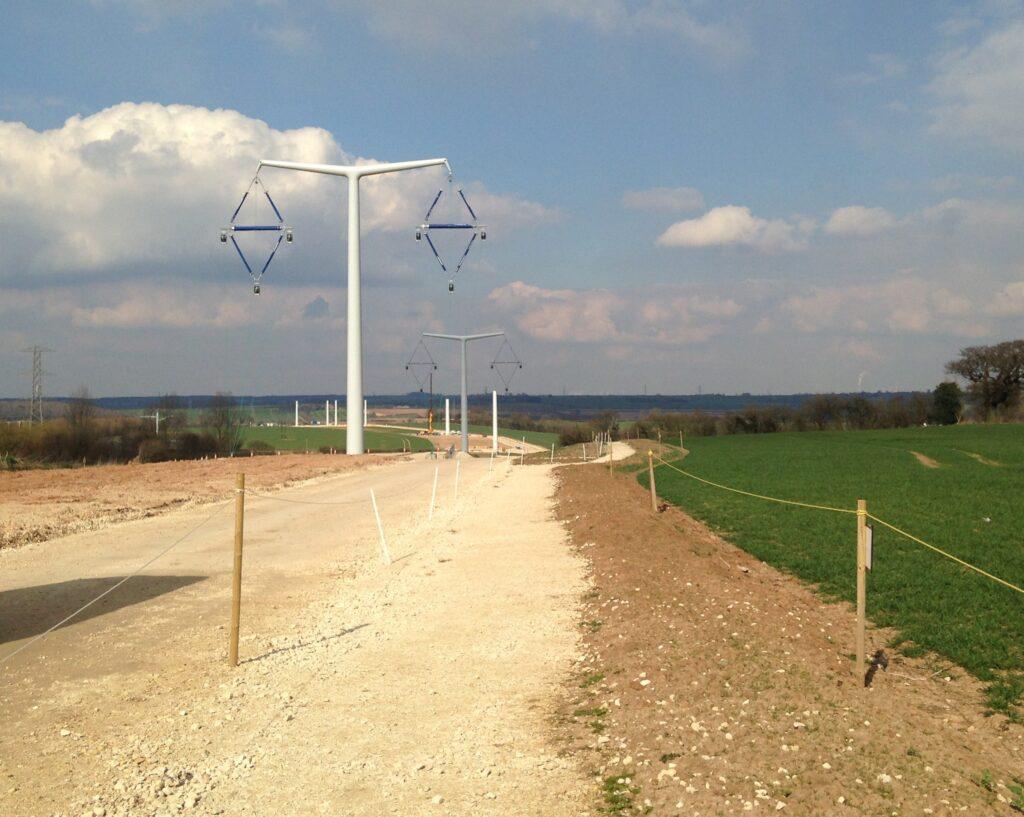Construction information: building and removing pylons
We appreciate that construction activity has been disruptive to communities. We are very aware of this and, along with our contractors, we seek to minimise impacts wherever possible. These are some of the activities you may see when we are working in your area.
Vegetation clearance and planting
Before we start construction, we clear some vegetation along the route. These trees and hedgerows were identified as part of our planning application and we have committed to replacing them at a ratio of 4 to 1 after construction is complete. Wherever possible, replanting will take place in the same location (in-situ planting); where this is not possible, we will plant at an agreed location nearby (ex-situ planting), subject to agreement with landowners.
Building overhead lines
We’re using two types of pylons on this project; T-pylons and traditional steel lattice pylons. While they are very different in appearance and size, the construction process is similar.

Building the new overhead lines will involve several different types of engineering activity:
Site set upOur construction areas are fenced off to keep the public and livestock out of harm’s way. |
Pylon foundationsLong concrete pillars are driven deep into the ground and topped with a layer of reinforced concrete. This forms the foundations that will support the pylon. Machinery, pre-mixed concrete and steelwork for the foundations will be delivered to the construction site in heavy goods vehicles (HGVs). |
Building pylonsPylons will be assembled in sections; the number of sections will vary according to the size and type of pylon being built. The T-pylon has large pieces that can be part assembled at ground level before being lifted into place by a crane. The lattice pylons are made up of many beams and struts which can be erected in different ways; it is likely that as with the T-pylon, they will be part assembled and then lifted into place. |
Attaching the wiresOnce the pylons are built, we hang the wires, or conductors, that carry the electricity. This is known as ‘stringing’. We string a section of approximately 10 pylons at a time. The conductor is pulled from one end to the other using large machinery. We need to erect scaffolding and netting where the route crosses areas such as roads, rivers and publicly accessible areas. The scaffolding is visible, and to keep everyone safe when we’re carrying out this work, we use temporary traffic lights or ‘Stop and Go’ boards on some roads. |
ReinstatementOnce the overhead line is constructed, temporary roads and working areas will be removed and the ground reinstated. |
WPD wood pole overhead lineWestern Power Distribution (WPD) will build a short section of wood pole 132,000 volt overhead line at Sandford. Cranes won’t be needed to install the wood poles and the working area won’t be fenced off. |
Removing existing WPD overhead lines
We’re removing pylons to make way for the new connection, and minimise the visual impact on the local landscape. We’re removing 67.6 km of existing 132,000 volt overhead line between Bridgwater and Avonmouth.
Building underground cables
As part of this project, we are installing 400,000 volt and 132,000 volt underground cables. The construction process for both is similar, though different in scale.